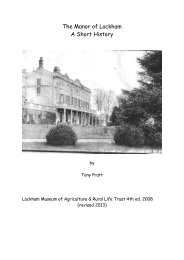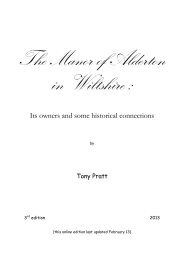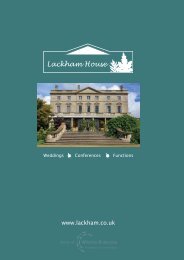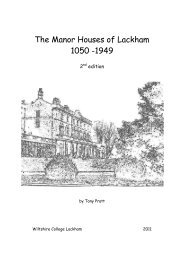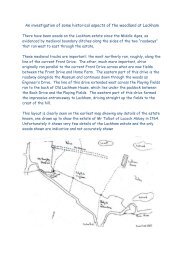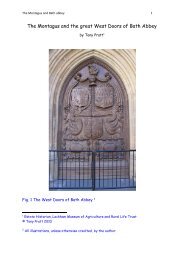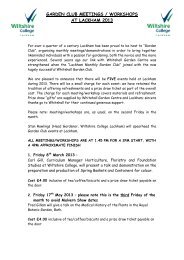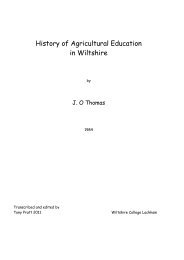Vol 1: The Bluets - Lackham Countryside Centre
Vol 1: The Bluets - Lackham Countryside Centre
Vol 1: The Bluets - Lackham Countryside Centre
Create successful ePaper yourself
Turn your PDF publications into a flip-book with our unique Google optimized e-Paper software.
<strong>The</strong> <strong>Bluets</strong> 52<br />
centre of administration in the Bramber Rape 209 ,<br />
<strong>The</strong> Rape was an administrative division of the county of Sussex.<br />
<strong>The</strong> six Rapes of Arundel, Bramber,, Chichester, , , Hastings, , Lewes,<br />
and Pevensey, were the primary divisions of the county of Sussex,<br />
intermediate between the county and Hundred. In this respect, they<br />
were similar to the Lathes of Kent and the Ridings of Yorkshire and<br />
Lincolnshire.<br />
In other respects, however, they were dissimilar. Each Rape was a<br />
castlery, centred on a castle; each was in the hands of a single tenant-inchief;<br />
and each had<br />
the honour court being usually held there. During the<br />
forfeiture of the rape between 1208 and 1215, and also for a<br />
time afterwards, the castle was in the keeping of a succession<br />
of royal henchmen, including Rowland Bloet (recorded 1210,<br />
1214-15), John of Monmouth (1215), and Robert le Savage<br />
(1217). King John visited the castle in 1209, and in the<br />
following year the castle was extensively repaired.<br />
<strong>The</strong> Rapes also had an artificial profile, running in roughly parallel strips<br />
between the coast and the northern boundary of the county, each<br />
controlling one corridor of communication between London and the<br />
Channel. <strong>The</strong> vital routes between England and Normandy were<br />
therefore in the hands of six of the Conqueror's most trusted relatives<br />
or lieutenants; but no one or two of them could block his way.<br />
<strong>The</strong> Rapes were not a Norman innovation since Domesday Book itself<br />
refers to their existence in 1066. <strong>The</strong>ir characteristic features in 1086,<br />
however, mean that they had certainly been drastically remodelled in the<br />
intervening years, with military considerations uppermost in the minds of<br />
those responsible for the changes, a fact emphasised by the many<br />
references in Domesday Sussex to fragments of manors 'lost' to an<br />
adjacent Rape since 1066. Whoever carved out the new Rapes showed a<br />
cavalier disregard for the manorial structures of Anglo-Saxon England.<br />
This period under the control of Roland Bluet was the only time that it<br />
was outside the ownership of the de Braose family until the line died out<br />
in 1324. It was William de Braose who built Bramber castle in about 1070<br />
to defend an important port on the River Adur<br />
209<br />
An excellent review of the administrative unit of a rape is to be found at<br />
http://domesdaybook.net/helpfiles/hs1070.htm,



